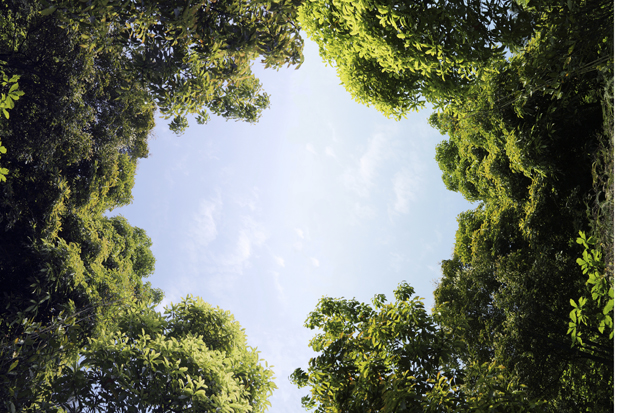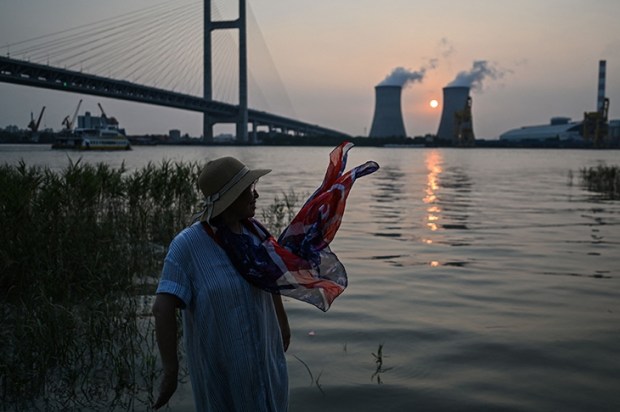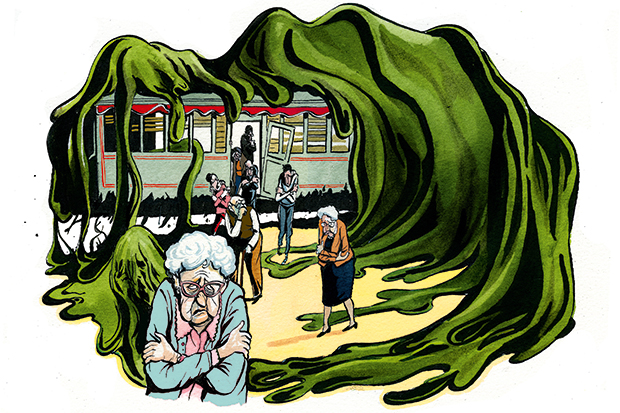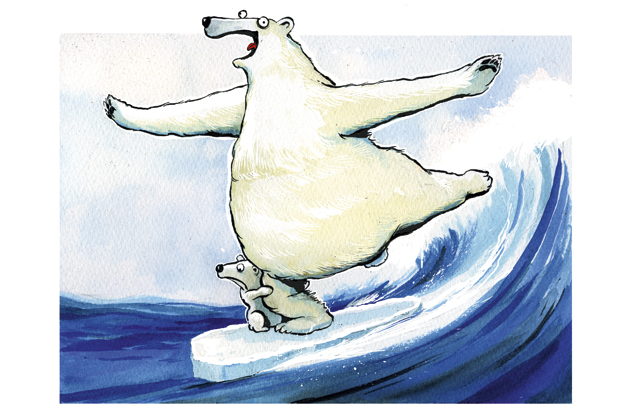Global greening is the name given to a gradual, but large, increase in green vegetation on the planet over the past three decades. The climate change lobby is keen to ensure that if you hear about it at all, you hear that it is a minor thing, dwarfed by the dangers of global warming. Actually, it could be the other way round: greening is a bigger effect than warming.
It is a story in which I have been both vilified and vindicated. Four years ago, I came across an online video of a lecture given by Ranga Myneni of Boston University in which he presented an ingenious analysis of data from satellites. This proved that much of the vegetated area of the planet was getting greener, and only a little bit was getting browner. In fact, overall in 30 years, the green vegetation on planet Earth had increased by a rather extraordinary 14 per cent. He said this was occurring in all vegetation types — from tropical rainforests to arctic tundra.
What was responsible for this ecological good news? He credited rising carbon dioxide concentrations in the atmosphere for half of the greening — rather than, say, the application of agricultural fertiliser, warmer temperatures or increased rainfall. Carbon dioxide, along with water, is the raw material that plants use to make carbohydrates, with the help of sunlight. So it stands to reason that raising its concentration should help plants grow.
I was startled by Myneni’s data. I knew that there had been thousands of experiments in which carbon dioxide levels had been increased over crops or wild ecosystems to find out whether it boosted their growth (it did). I also knew that commercial greenhouse owners now routinely maintain carbon dioxide levels in their greenhouses at more than double normal levels, because it makes their tomatoes grow faster.
But the global effect of CO2 levels on the quantity of vegetation had not, as far as I could tell, been measured — until now. When I wrote about this, it was among the very first non-scientific articles on the satellite evidence for global greening. But, as I found out, there is not much market for this good news. I was subjected online to withering scorn by the usual climate spin doctors, but even they had to admit I was ‘factually accurate’.
Myneni’s results were eventually published six months ago — when the great Paris climate jamboree was over. His results were now even stronger than he had concluded in his original lecture. Now he said that almost three quarters of the cause of greening was carbon dioxide — up from half. As the paper’s lead author, Zaichun Zhu, of Beijing University, puts it, it’s the equivalent of adding a green continent twice the size of mainland USA. Frankly, I think this is big news. A new continent’s worth of green vegetation — all created in a single human generation.
But it’s so controversial that even Dr Myneni felt the need to criticise me for publicising his research. At the end of last year, he said I had been wrong to claim that carbon dioxide fertilisation is ‘responsible for the greening of the earth’. And this from the man who, a few months later, would say that ‘CO2 fertilisation explains 70 per cent of the greening trend.’ As the climate economist Professor Richard Tol commented: ‘The new paper vindicates what Matt Ridley and others have been saying all along — yet they apparently deserve to be kicked nonetheless.’
Back in 1908 Svante Arrhenius, a Nobel laureate and the father of the greenhouse theory, predicted something like this would happen. ‘By the influence of the increasing percentage of carbonic acid in the atmosphere, we may hope to enjoy ages with more equable and better climates,’ he wrote. The earth, he predicted, ‘will bring forth much more abundant crops than at present, for the benefit of rapidly propagating mankind’. This has proved to be the case. Environmentally, this is perhaps the best news you’ve
never heard about.
So far, the benefits of global greening have been greater than expected, while the costs of global warming have been smaller than expected and the price of reducing carbon dioxide emissions has been higher than expected. That price is falling more heavily on poor than on rich people. The evidence suggests that this imbalance will persist for most of this century, perhaps longer. It is time for a rethink.
The post Climate of ignorance appeared first on The Spectator.
Got something to add? Join the discussion and comment below.
Get 10 issues for just $10
Subscribe to The Spectator Australia today for the next 10 magazine issues, plus full online access, for just $10.
You might disagree with half of it, but you’ll enjoy reading all of it. Try your first month for free, then just $2 a week for the remainder of your first year.














Comments
Don't miss out
Join the conversation with other Spectator Australia readers. Subscribe to leave a comment.
SUBSCRIBEAlready a subscriber? Log in